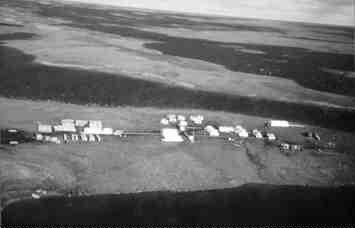Consolidation in the gold sector continues apace, with South Africa’s
Gold Fields will pay US$180 million in cash and issue roughly US$52 million in Gold Fields shares, which will number between 12 million and 19 million (compared with some 470 million currently outstanding). WMC will also receive a royalty on any production that exceeds the existing reserve base at the two operations.
To come up with the cash portion, Gold Fields will dip into US$20 million of its offshore reserves and then draw down US$160 million from a newly arranged US$200-million credit line with Barclays and Citibank. The credit facility has a term of five years and bears interest at 1.15% above the London interbank offer rate.
The share issue will be based on the weighted-average price of Gold Fields’ American depository receipts during the 20 trading days prior to the closing of the deal, expected before December.
WMC will receive a 4% net smelter royalty (NSR) on any cumulative future production at St. Ives (from the beginning of 2002) that exceeds 3.3 million oz., if the price of gold exceeds A$400 per oz. At Agnew, WMC will receive a 4% NSR on production that exceeds 800,000 oz., if gold stays above A$400 per oz.
Also, effective immediately, whenever gold exceeds A$600 per oz., WMC will receive 10% of the difference between the spot gold price and A$600 per oz. on gold production from both operations.
While Gold Fields downplays the royalty, noting that it will entail no cash outlays in the near- to mid-term, WMC expects the royalty will eventually deliver more than US$24 million into its coffers.
Overall, WMC estimates that the sale of the two modestly profitable mines will generate a before-tax gain of US$69 million, not counting the royalty.
St. Ives, situated 80 km south of Kalgoorlie, produced more than 408,000 oz. gold in 2000 from one underground mine and four open pits.
At the end of 2000, the resource base, including reserves, stood at 7.1 million contained ounces broken down into 25.8 million tonnes grading 6.2 grams gold accessible from underground, 16.6 million tonnes of 3 grams gold in open pits, and 9.6 million tonnes of 1.2 grams in stockpiles.
Agnew
The Agnew operation, 330 km north of Kalgoorlie, churned out more than 211,000 oz. in 2000 from two underground mines.
At the end of 2000, Agnew’s resource base stood at 11.7 million tonnes of 5.2 grams gold (underground) and 5.3 million tonnes of 2.7 grams gold (pits), for a total of 2.4 million contained ounces.
WMC’s Chief Executive Officer, Hugh Morgan, says the operations were being sold as going concerns and that all site-based employees would be offered positions with Gold Fields.
Gold Fields Chairman Chris Thompson describes the acquisition as being accretive to its earnings per share, cash flow per share and net asset value. He adds that the company sees “significant potential to optimize and enhance” the two operations by leveraging Gold Fields’ open-pit and heap-leach experience in South Africa and Ghana.
Significantly, Gold Fields only acquired the two mines and did not take on WMC’s existing hedge book, thus maintaining the former’s status as largely unhedged gold play. WMC’s gold hedge book totals 439,000 oz. at a minimum gold price of US$284 per oz.
The deal will boost Gold Fields’ annual output by about 600,000 oz. to 4.3 million oz., entrenching the company’s status as the world’s fourth-largest gold producer, after AngloGold, Barrick Gold and Newmont Mining.
Furthermore, Gold Fields says it intends to take an aggressive stance in any more consolidation in Australia’s gold sector.
Gold Fields takes care to mention that the transaction has already been approved by the South African Reserve Bank, which famously stepped in to halt Gold Fields’ proposed US$3.7-billion merger with Canada’s
Approval sought
Unless the deal is wrapped up before Gold Fields’ annual general meeting at the end of October, the company will seek special shareholder approval for the share issuance. If shareholders are cool to the idea of accepting South African paper and withhold their approval, then Gold Fields will increase its cash payment for the two assets to US$225 million.
While WMC has made it widely known, over the past year, that it wants to offload its gold assets, the company did not sell its third producing gold asset, a 51% interest in the Central Norseman operations.
Situated 725 km east of Perth, Norseman comprises two underground mines, Bullen and Harlequin, and ranks as Australia’s longest continuously running gold operation. Mining began in 1935 and, to date, has yielded 4.4 million oz.
Today, WMC’s share of production from Norseman is about 100,000 oz. per year.
WMC still retains its interests in various grassroots-stage gold exploration plays in Australia, Brazil, Canada, China, French Guiana and Indonesia.
In Canada, WMC is partnered with
WMC says it is in discussions with third parties regarding the sale of its stakes in Norseman and Meliadine.
Having started life as a gold company in 1933 and thereafter producing 21 million oz., WMC is today a small giant in the alumina, nickel and fertilizer businesses.


Be the first to comment on "Gold Fields to buy WMC’s gold mines"